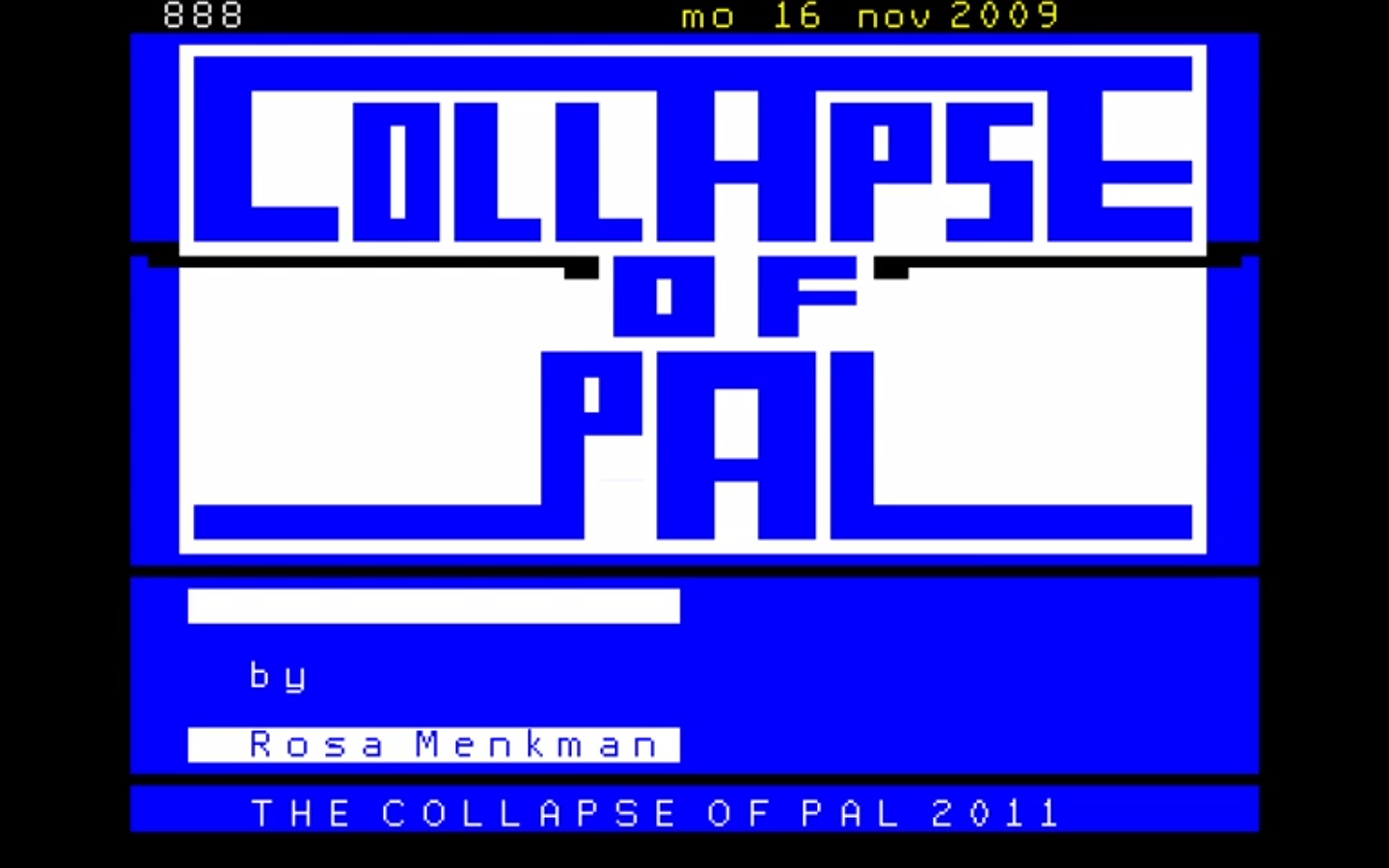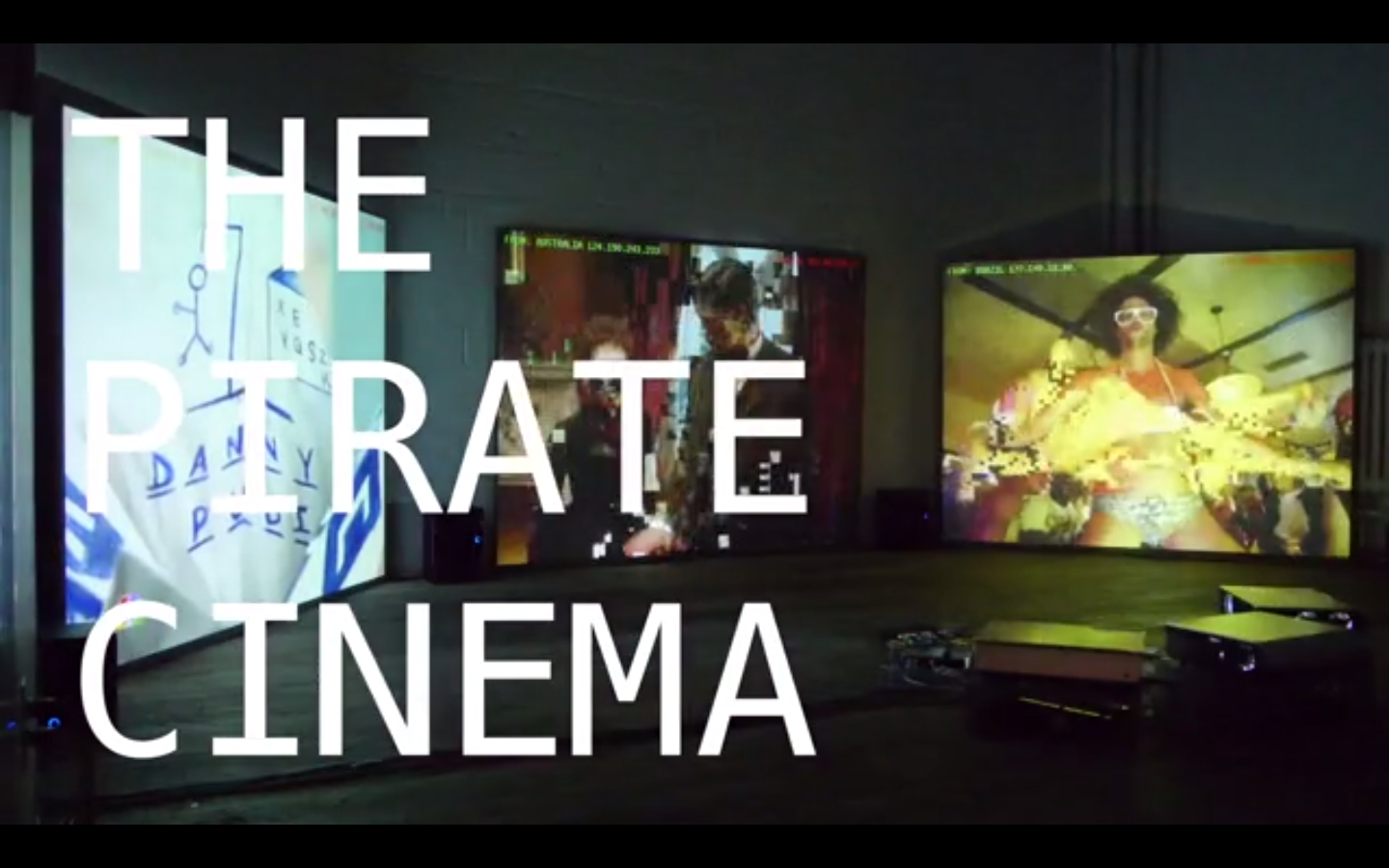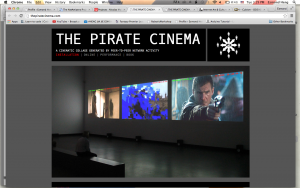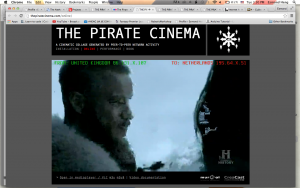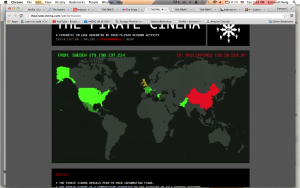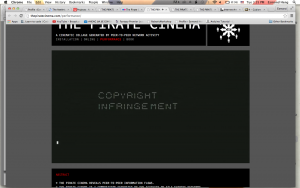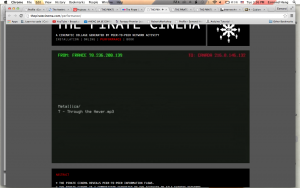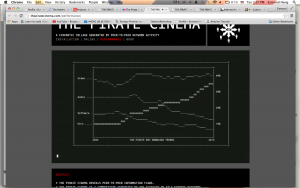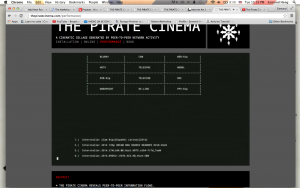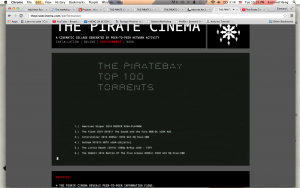“His eyes are staring, his mouth is open, his wings are spread. This is how one pictures the Angel of history.” – Walter Benjamin, Ninth Thesis on the Philosophy of History
Rosa Menkman in her work “The Collapse of PAL” shows us the Angel of History (as described by Walter Benjamin) reflecting on the PAL signal and its termination. This audio-visual performance presents to us a cold, jagged visualization of the silent termination of the PAL signal in favor of the DVB signal.
[vimeo 12199201 w=500 h=375]
The Collapse of PAL from Rosa Menkman on Vimeo.
The above video is the “Render of part one of the Collapse of PAL (Eulogy, Obsequies and Requiem for the blue plains of phosphor).” The title is rather abstract to me, but I guess that this is just an excerpt and the original video is 30 minutes long. I did, however, find a performance version on Youtube:
[youtube http://www.youtube.com/watch?v=DuDwaQDzOZc]
The performance (and the video) plays out a narrative, using Walter Benjamin’s description of the Angel of History to verbalize the thoughts of the Angel about the PAL signal. The nature of the Angel is such that it wants to save the PAL signal, to preserve it, but progress in the form of a storm is too strong for the Angel to fight against. Hence the PAL signal is simply rendered obsolete, left behind in the landscape of the past.
Menkman continues describing the narrative on her blog, saying
“However, the Angel of History has to conclude that while the PAL signal might be argued death, it still exists as a trace left upon the new, “better” digital technologies. PAL can, even though the technology is terminated, be found here, as a historical form that newer technologies build upon, inherit or have appropriated from. Besides this, the Angel also realizes that the new DVB signal that has been chosen over PAL, is different but at the same time also inherently flawed.”
I enjoy how the narrative is continuously moving together with the landscapes on the screen. It’s as if we were being taken on some kind of time-travelling journey, moving through the years with the Angel as we contemplate the history of PAL.
I think that the entire performance comes together very cohesively to create a chilling and rather nostalgic piece of work. Something I particularly liked (even though Menkman admitted to making some mistakes) were the typos made during the performance. I’m not sure whether they were deliberate – I initially thought they were – until I read her description below the Youtube video. However, these mistakes just seemed to echo the “inherent flaws” of the PAL and DVB signals. They also served to create more suspense during the piece.
Another aspect is the sounds used during the video; the build-up in the beginning sets the cold tone of the video, and it is pierced with sharp screeches and deep, mysterious booms. Throughout the performance there is also always some buzzy fuzzy background noise which I feel adds more to the suspenseful aspect of the work.
I also liked how Menkman used two screens in her performance to compare PAL and DVB. The glitching was really similar for much of the performance, but eventually the PAL screen was almost unreadable.
Overall, there were many aspects of the work which captivated me. I particularly enjoyed the narrative and the sounds. I think that the work serves to show us the relentless advancement of technologies, each building upon the ruins of the previous ones. It made me think of the number of times I myself have witnessed the destruction of older technology, yet completely disregarded it because I was so focused on the new-ness and novelty of the new technology,
